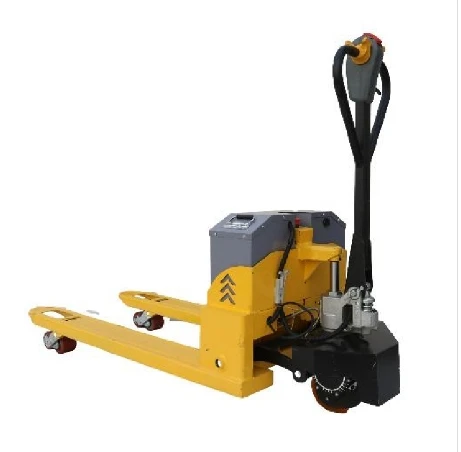


Understanding Semi-Automatic Pallet Jacks Enhancing Warehouse Efficiency
In the bustling landscape of modern warehousing and logistics, efficiency and productivity are paramount. One of the unsung heroes facilitating these goals is the semi-automatic pallet jack. This innovative piece of equipment bridges the gap between manual handling and fully automated solutions, offering a versatile and cost-effective tool for managing heavy loads and streamlining operations.
What is a Semi-Automatic Pallet Jack?
A semi-automatic pallet jack is a user-friendly device designed to lift and move pallets within a warehouse or storage facility. Unlike manual pallet jacks, which rely on human strength for movement and lifting, semi-automatic models incorporate electric features to enhance their functionalities. These jacks typically feature a powered lift mechanism that can raise and lower pallets with the push of a button, while still allowing for manual maneuvering across the floor.
Key Features and Benefits
1. Enhanced Lifting Capability One of the standout features of semi-automatic pallet jacks is their ability to lift heavy loads efficiently. With electric lifting, operators can easily handle larger weights without the strain that comes from manual lifting, reducing the risk of injury and fatigue.
2. Increased Productivity With the reduced physical effort required for lifting and transporting goods, warehouse staff can complete tasks more quickly. This increased speed not only enhances productivity but also allows for more efficient use of employee time, enabling staff to focus on more critical aspects of operations.
3. Versatility Semi-automatic pallet jacks are designed to handle a variety of pallet types and sizes, making them suitable for diverse applications within warehouses, distribution centers, and retail environments. Their portability means they can be used in tight spaces as well as larger areas, providing flexibility in storage and inventory management.

4. Cost-Effectiveness Compared to fully automated material handling solutions, semi-automatic pallet jacks represent a more affordable investment for many businesses. They offer significant savings on labor costs while still enhancing operational efficiency, making them accessible for small and medium-sized enterprises as well as larger corporations.
5. User-Friendly Design Semi-automatic pallet jacks are engineered with ease of use in mind. Most models feature ergonomic controls and intuitive designs, allowing operators to quickly learn how to use them without extensive training. Safety features, such as emergency stop buttons and solid brakes, further ensure a secure working environment.
Applications in Logistics and Warehousing
The applicability of semi-automatic pallet jacks stretches across various sectors, including retail, manufacturing, and food distribution. In retail environments, they are ideal for transporting goods from storage areas to the sales floor. In manufacturing, they facilitate the movement of raw materials and finished products, enhancing production workflow. In the food distribution sector, these jacks help maintain the efficiency of inventory management while ensuring adherence to safety and hygiene standards.
Maintenance and Care
To ensure longevity and optimal performance, regular maintenance of semi-automatic pallet jacks is essential. Operators should be trained to perform routine checks on the batteries, wheels, and lifting mechanism. Keeping the jack clean and free from debris not only aids in performance but also helps prevent accidents and extend the life of the equipment.
Conclusion
In an era where efficiency is key to success, semi-automatic pallet jacks offer a practical solution for many businesses looking to improve their material handling processes. By combining the advantages of electric lifting with the flexibility of manual maneuvering, these devices not only enhance productivity but also ensure a safer working environment. As logistics and warehousing continue to evolve, investing in semi-automatic pallet jacks may very well be a step toward shaping a more efficient future.



